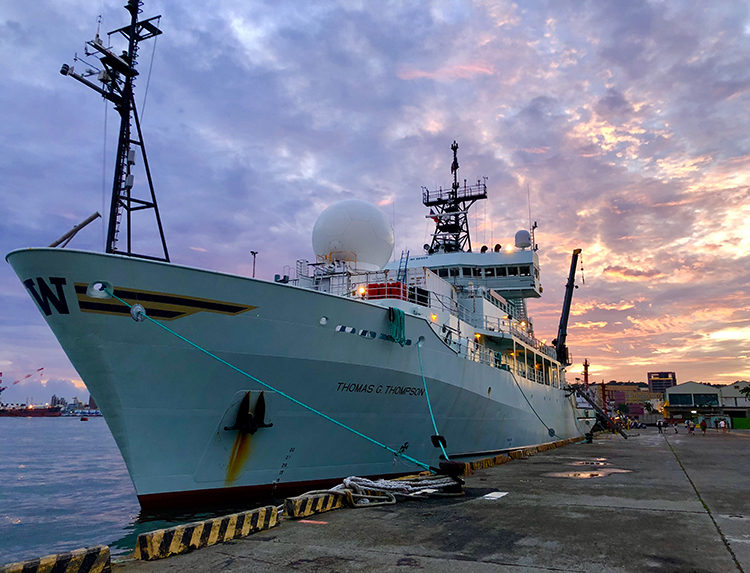Researchers overcome challenges to collect new typhoon observations
As field researchers know, sometimes the science you set out to do is not what you end up doing. But the drive for knowledge is unwavering, and scientists find a way to get the job done, even if it means changing course, maneuvering bureaucratic hurdles and waiting out setbacks. Flexibility is key to field campaigns, and sometimes the reward is in the unexpected discoveries.
One team of CSU scientists can attest to this recent experience. Department of Atmospheric Science researchers set sail on U.S. research vessel the R/V Thomas G. Thompson in August and September to study precipitation in the tropical west Pacific. Their project, the Propagation of Intra-Seasonal Tropical OscillatioNs, or PISTON, seeks a better understanding of precipitation processes in this area, in order to better understand weather across the Maritime Continent, in southeastern continental Asia, and even in the U.S.
“PISTON had lots of challenges because it was a complex, international experiment. But many of the challenges we faced come with the business of doing this type of science,” said Professor Steven Rutledge, lead principal investigator for PISTON’s atmospheric component. “In the end, it all worked out.”
A complex set of factors contribute to tropical weather, requiring PISTON to be an extensive field campaign involving intensive numerical modeling and observation. Fourteen universities and several national and international organizations collaborated on the project, with funding for the U.S. portion provided by the Office of Naval Research.
Read the full Source article, “Researchers overcome challenges to collect new typhoon observations.”
Photo at top: The R/V Thompson docked in Kaohsiung, Taiwan.







